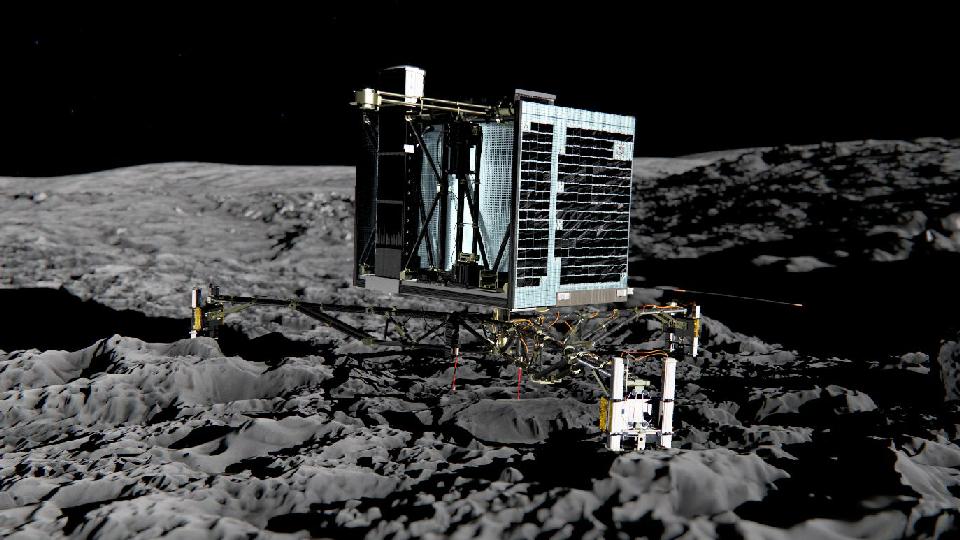The Philae lander has sent back the first images of the surface of a comet after successfully attaching itself to comet 67P/Churyumov-Gerasimenko.
After an initial bumpy landing where the device bounced twice before securing itself on the surface of the comet, signal has been established with the lander.
But not everything has gone according to plan, with the harpoons designed to firmly secure the innovative machine not firing as intended due to the unexpectedly softer landing. In addition, Philae has lodged itself in a dark rocky cavern which scientists say does not receive enough solar activity to recharge the batteries.
Early data started to come back from instruments, and one team could see that the lander had sunk about 4cm (1.5 inches) into the surface, suggesting a relatively soft top layer, the BBC reported.
Director general of the European Space Agency Jean-Jacques Dordain described it as “a great great day, not only for Esa, but… I think for the world”.
Despite these problems, scientists from the Rosetta mission, so named after the Rosetta Stone and the Philae Obelisk which enabled Western researchers to understand the Egyptian consonant alphabet and thus study ancient works, say it is stable and sending back data.
Dr Patrick Harkness, a senior lecturer in space systems engineering at Glasgow University exclusive told Breitbart London the significance of the Rosetta Mission.
“This mission is giving us access to materials that were present at the formation of the solar system” he said, “This material, unlike rock found on earth which has been subject to the tectonic activity of our planet, has not been subject to change for all this time.”
”Therefore in accessing 67P/Churyumov-Gerasimenko scientists can examine this primordial material and learn something about the likely makeup of the early Earth, in times when life first appeared.”
Philae was launched in 2004 and has travelled 3.5 million miles on its mission to gather data on the beginnings of our planet and solar system.
Comets are a mixture of rock and ice which orbit the sun in elliptical patterns rather than the circular orbits which planets follow. When they near the sun flares can be seen as parts of the comet sublimate into space. Philae and rosetta hope to further examine the activities of the comet as it approaches the Sun on its orbit.

COMMENTS
Please let us know if you're having issues with commenting.